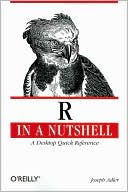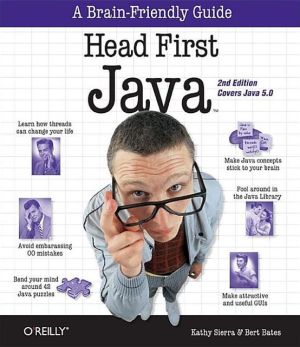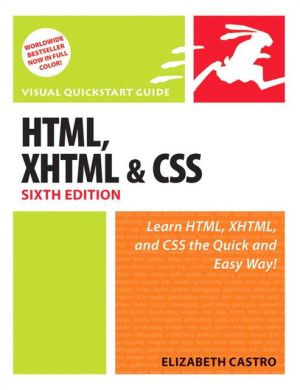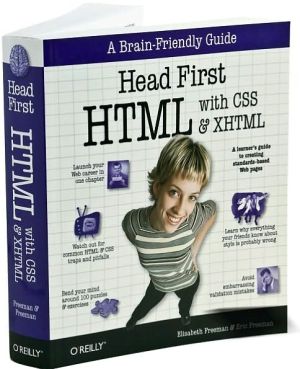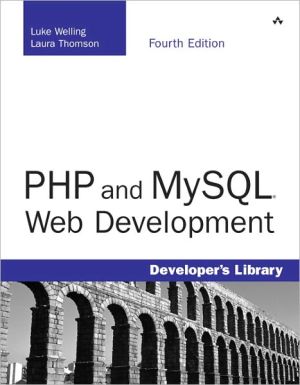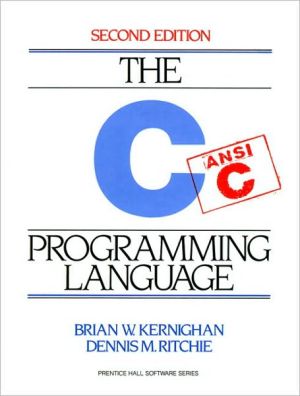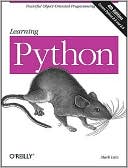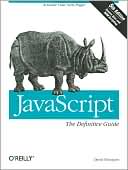R in a Nutshell
Search in google:
What people are saying about R in a Nutshell "I am excited about this book. R in a Nutshell is a great introduction to R, as well as a comprehensive reference for using R in data analytics and visualization. Adler provides 'real world' examples, practical advice, and scripts, making it accessible to anyone working with data, not just professional statisticians." —Martin Schultz, Arthur K. Watson Professor of Computer Science, Yale University"R in a Nutshell is an ideal book for getting started with R. Newcomers will find the fundamentals for performing statistical analysis and graphics, all illustrated with practical examples. This book is an invaluable reference for anyone who wants to learn what R is and what is can do, even for longtime R users looking for new tips and tricks." —David M. Smith, Editor of the "Revolutions" blog at REvolution ComputingWhy learn R? Because it's rapidly becoming the standard for developing statistical software. R in a Nutshell provides a quick and practical way to learn this increasingly popular open source language and environment. You'll not only learn how to program in R, but also how to find the right user-contributed R packages for statistical modeling, visualization, and bioinformatics. The author introduces you to the R environment, including the R graphical user interface and console, and takes you through the fundamentals of the object-oriented R language. Then, through a variety of practical examples from medicine, business, and sports, you'll learn how you can use this remarkable tool to solve your own data analysis problems. Understand the basics of the language, including the nature of R objects Learn how to write R functions and build your own packages Work with data through visualization, statistical analysis, and other methods Explore the wealth of packages contributed by the R community Become familiar with the lattice graphics package for high-level data visualization Learn about bioinformatics packages provided by Bioconductor
Preface; Why I Wrote This Book; When Should You Use R?; R License Terms; Examples; How This Book Is Organized; Conventions Used in This Book; Using Code Examples; How to Contact Us; Safari® Books Online; Acknowledgments; R Basics; Chapter 1: Getting and Installing R; 1.1 R Versions; 1.2 Getting and Installing Interactive R Binaries; Chapter 2: The R User Interface; 2.1 The R Graphical User Interface; 2.2 The R Console; 2.3 Batch Mode; 2.4 Using R Inside Microsoft Excel; 2.5 Other Ways to Run R; Chapter 3: A Short R Tutorial; 3.1 Basic Operations in R; 3.2 Functions; 3.3 Variables; 3.4 Introduction to Data Structures; 3.5 Objects and Classes; 3.6 Models and Formulas; 3.7 Charts and Graphics; 3.8 Getting Help; Chapter 4: R Packages; 4.1 An Overview of Packages; 4.2 Listing Packages in Local Libraries; 4.3 Loading Packages; 4.4 Exploring Package Repositories; 4.5 Custom Packages; The R Language; Chapter 5: An Overview of the R Language; 5.1 Expressions; 5.2 Objects; 5.3 Symbols; 5.4 Functions; 5.5 Objects Are Copied in Assignment Statements; 5.6 Everything in R Is an Object; 5.7 Special Values; 5.8 Coercion; 5.9 The R Interpreter; 5.10 Seeing How R Works; Chapter 6: R Syntax; 6.1 Constants; 6.2 Operators; 6.3 Expressions; 6.4 Control Structures; 6.5 Accessing Data Structures; 6.6 R Code Style Standards; Chapter 7: R Objects; 7.1 Primitive Object Types; 7.2 Vectors; 7.3 Lists; 7.4 Other Objects; 7.5 Attributes; Chapter 8: Symbols and Environments; 8.1 Symbols; 8.2 Working with Environments; 8.3 The Global Environment; 8.4 Environments and Functions; 8.5 Exceptions; Chapter 9: Functions; 9.1 The Function Keyword; 9.2 Arguments; 9.3 Return Values; 9.4 Functions As Arguments; 9.5 Argument Order and Named Arguments; 9.6 Side Effects; Chapter 10: Object-Oriented Programming; 10.1 Overview of Object-Oriented Programming in R; 10.2 Object-Oriented Programming in R: S4 Classes; 10.3 Old-School OOP in R: S3; Chapter 11: High-Performance R; 11.1 Use Built-in Math Functions; 11.2 Use Environments for Lookup Tables; 11.3 Use a Database to Query Large Data Sets; 11.4 Preallocate Memory; 11.5 Monitor How Much Memory You Are Using; 11.6 Functions for Big Data Sets; 11.7 Parallel Computation with R; 11.8 High-Performance R Binaries; Working with Data; Chapter 12: Saving, Loading, and Editing Data; 12.1 Entering Data Within R; 12.2 Saving and Loading R Objects; 12.3 Importing Data from External Files; 12.4 Exporting Data; 12.5 Importing Data from Databases; Chapter 13: Preparing Data; 13.1 Combining Data Sets; 13.2 Transformations; 13.3 Binning Data; 13.4 Subsets; 13.5 Summarizing Functions; 13.6 Data Cleaning; 13.7 Finding and Removing Duplicates; 13.8 Sorting; Chapter 14: Graphics; 14.1 An Overview of R Graphics; 14.2 Graphics Devices; 14.3 Customizing Charts; Chapter 15: Lattice Graphics; 15.1 History; 15.2 An Overview of the Lattice Package; 15.3 High-Level Lattice Plotting Functions; 15.4 Customizing Lattice Graphics; 15.5 Low-Level Functions; Statistics with R; Chapter 16: Analyzing Data; 16.1 Summary Statistics; 16.2 Correlation and Covariance; 16.3 Principal Components Analysis; 16.4 Factor Analysis; 16.5 Bootstrap Resampling; Chapter 17: Probability Distributions; 17.1 Normal Distribution; 17.2 Common Distribution-Type Arguments; 17.3 Distribution Function Families; Chapter 18: Statistical Tests; 18.1 Continuous Data; 18.2 Discrete Data; Chapter 19: Power Tests; 19.1 Experimental Design Example; 19.2 t-Test Design; 19.3 Proportion Test Design; 19.4 ANOVA Test Design; Chapter 20: Regression Models; 20.1 Example: A Simple Linear Model; 20.2 Details About the lm Function; 20.3 Subset Selection and Shrinkage Methods; 20.4 Nonlinear Models; 20.5 Survival Models; 20.6 Smoothing; 20.7 Machine Learning Algorithms for Regression; Chapter 21: Classification Models; 21.1 Linear Classification Models; 21.2 Machine Learning Algorithms for Classification; Chapter 22: Machine Learning; 22.1 Market Basket Analysis; 22.2 Clustering; Chapter 23: Time Series Analysis; 23.1 Autocorrelation Functions; 23.2 Time Series Models; Chapter 24: Bioconductor; 24.1 An Example; 24.2 Key Bioconductor Packages; 24.3 Data Structures; 24.4 Where to Go Next; R Reference; base; boot; class; cluster; codetools; foreign; grDevices; graphics; grid; KernSmooth; lattice; MASS; methods; mgcv; nlme; nnet; rpart; spatial; splines; stats; stats4; survival; tcltk; tools; utils; Bibliography; Colophhhhhhon;Joseph Adler has many years of experience in data mining and data analysis at companies including DoubleClick, American Express, and VeriSign. He graduated from MIT with an Sc.B and M.Eng in Computer Science and Electrical Engineering. He is the inventor of several patents for computer security and cryptography, and the author of Baseball Hacks and R in a Nutshell.
